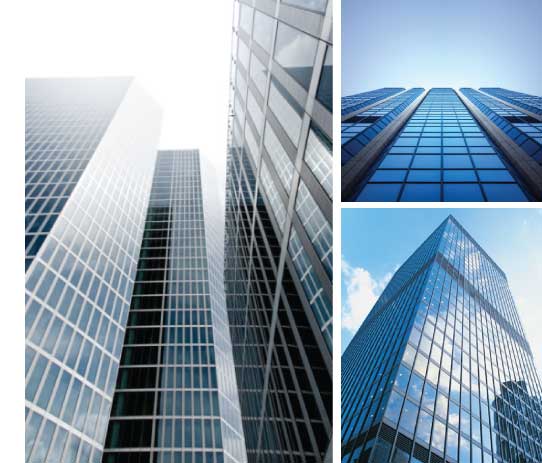Product by BSG Glass
Reflective Glass
Reflective glass characteristics
Reflective glass is glass that has been treated with a metallic coating to allow it to reflect heat. It is not reflective in the sense that it acts as a mirror, although some products do indeed have a highly reflective surface, but rather in the sense that it reflects radiation rather than absorbing it. This type of glass is used in environmentally friendly construction with the goal of reducing heat gain and loss, making structures much cheaper to heat and cool over the course of the year.

The precise finish used on reflective glass varies. There are a number of options available, including tinted glass that can be used to achieve a desired aesthetic effect. The finish is usually metallic in nature, and designed so that people behind the glass can see out. As a bonus, the coating sometimes reduces glare, which can be tremendously beneficial for making office environments healthier; glare is a common cause of eye strain, especially for people who work on computers.
Heat generated inside the building tends to stay in the building when the windows are made from reflective glass, which reduces heating costs. Conversely, heat from the outside stays outside, with the radiation being bounced back by the glass. This keeps the building cool in summer. Some structures that use it may be able to scale down or eliminate their climate control systems and other passive measures, while others need to run these systems less frequently, saving money and helping the environment out at the same time.

A classic use of this type of glass is in building facades. Glassed-in buildings wax and wane in popularity around the world, and when they are in vogue, using reflective options can cut down on operating costs over the building's lifetime, in addition to making the interior more pleasant to work in. Reflective auto glass is also available for installation in environmentally friendly vehicles.
Another use for reflective glass is in rooms where the climate needs to be tightly controlled, as seen in some scientific labs. In this case, the glass can be one of several measures used to keep the temperature inside the room as stable as possible. One advantage of passive systems like this is that they keep working when the power is out, providing a form of automatic protection when there is a problem with a computer or electrical system.

